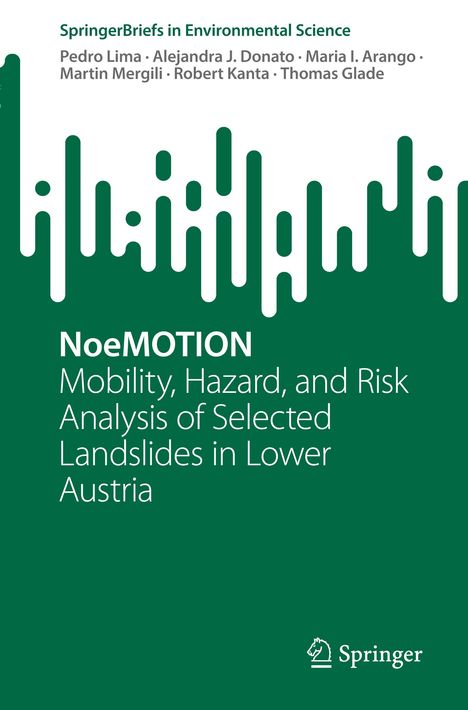Pedro Lima: NoeMOTION, Kartoniert / Broschiert
NoeMOTION
- Mobility, Hazard, and Risk Analysis of Selected Landslides in Lower Austria
(soweit verfügbar beim Lieferanten)
- Verlag:
- Springer Nature Switzerland, 08/2024
- Einband:
- Kartoniert / Broschiert, Paperback
- Sprache:
- Englisch
- ISBN-13:
- 9783031559815
- Artikelnummer:
- 11937711
- Umfang:
- 136 Seiten
- Nummer der Auflage:
- 2024
- Ausgabe:
- 2024
- Gewicht:
- 243 g
- Maße:
- 235 x 155 mm
- Stärke:
- 8 mm
- Erscheinungstermin:
- 4.8.2024
- Hinweis
-
Achtung: Artikel ist nicht in deutscher Sprache!
Klappentext
This book explores the complexities of landslide susceptibility and critical rainfall conditions in Lower Austria through a detailed analysis and actionable insights. This work provides a comprehensive approach to understanding LANDSLIDE risks by using data-driven methodologies, run-out models, and economic risk assessments . The book offers two types of scenarios: one that models more fluid LANDLSIDE movements and another that models more solid patterns, each responding differently to triggering events. This dual approach offers a more nuanced understanding of the variables at play, making the book an essential resource for those looking to make informed decisions ON LANSLIDE HAZARDS AND RISKS. If you are a policy-maker, an urban planner, or an environmental scientist, this book provides you with the tools needed to mitigate LANDSLIDE risks and improve safety measures. The focus here is on delivering solutions that have both immediate and long-term applications in the real-world context. The book fills a gap in the existing literature by providing a multi-dimensional, cross-sectoral assessment of landslide HAZARDS AND risks. Using state-of-the-art spatiotemporal LANDSLIDE models, the book goes beyond traditional hazard analysis to integrate critical variables like soil depth, economic impact, and climate conditions, here defined as scenarios. This approach provides a more holistic view of the risks, making it a valuable resource for both research and practical application. The principal audience remains environmental researchers and risk management professionals.
Biografie (Thomas Glade)
Thomas Glade hat sich an der Universität Bonn habilitiert und ist seit Herbst 2006 Professor für Physiogeographie an der Universität Wien. Er ist Vorsitzender des Arbeitskreises in der Geographie "Naturrisiken und Sozialkatastrophen"

